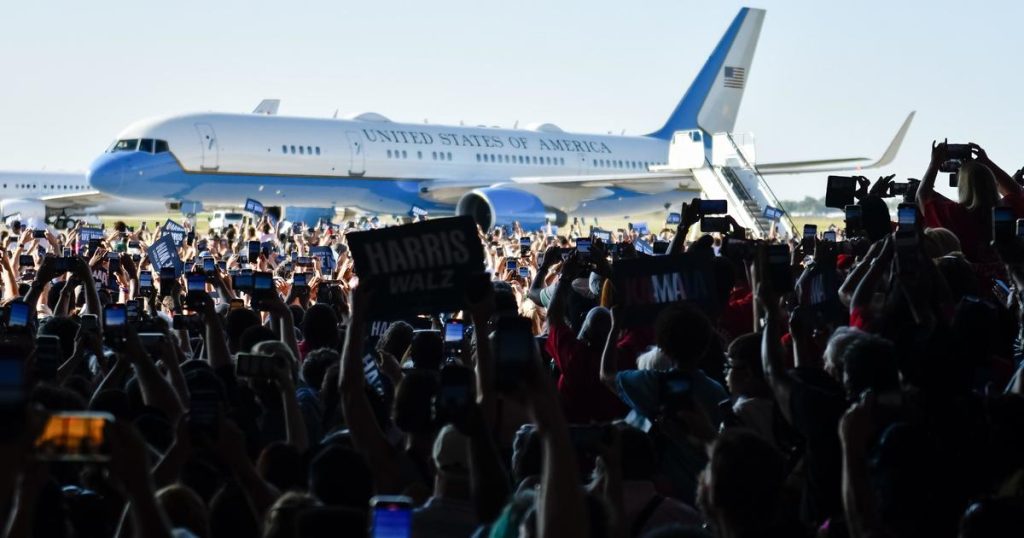Former President Donald Trump falsely claimed that Vice President Kamala Harris’ campaign lied about the attendance at her rally in Detroit, Michigan on August 7. Trump alleged that a photo of the crowd was generated using artificial intelligence, but multiple videos from the event showed a large crowd in attendance. Local reporters estimated that 15,000 people were present. Similar photos were taken by news agencies covering the event, debunking Trump’s claims. The Harris campaign refuted the allegations on social media and shared video evidence of the rally to prove the crowd’s size.
Hany Farid, a professor specializing in deepfake detection, received requests to analyze the image in question and found no evidence that it was digitally altered or AI-generated. Despite this, Trump supporters continued to share debunked images and spread false claims about the rally. One such image on social media showed AI-generated faces claiming to be fake Harris supporters, but it was later revealed that the image was not circulated by the Harris campaign. Additionally, a screenshot of a fake Craigslist advertisement for paid actors to attend a political event at a convention center in Phoenix, Arizona circulated over the weekend but had been debunked by fact-checkers previously.
Trump has been boasting about the size of the crowds at his recent rallies, comparing them to historic events. At a news conference, he claimed that more people attended his speech near the White House on January 6, 2021, than Martin Luther King Jr.’s “I Have a Dream” speech in 1963. However, official estimates show that King’s speech had a larger crowd size, with approximately 250,000 people attending the March on Washington for Jobs and Freedom. In contrast, approximately 53,000 people attended Trump’s speech on January 6, 2021, according to the House Select Committee investigating the Capitol assault that day.
The dispute over crowd size at political events reflects the ongoing polarization in American politics and the use of social media to spread misinformation. The spread of false claims and doctored images related to campaign events can create confusion and division among the public. Fact-checkers play a crucial role in debunking misinformation and providing accurate information to counter false narratives. The controversy surrounding the attendance at Vice President Harris’ rally highlights the challenges of verifying images in the digital age and the importance of fact-checking in maintaining the integrity of the political process.
The Harris campaign’s response to the allegations demonstrates the need for swift and accurate responses to false claims in the age of social media. By sharing video evidence of the rally and refuting the accusations, the campaign aimed to correct the misinformation spread by Trump and his supporters. However, the persistence of false claims on social media platforms like Truth Social and Telegram shows the challenges of combating misinformation online. It is essential for individuals to critically evaluate information they encounter online and seek out credible sources to verify claims and images, especially in the context of political events where misinformation can have significant consequences.
Overall, the controversy over the attendance at Vice President Harris’ rally in Detroit highlights the ongoing battle against misinformation in American politics. The spread of false claims, doctored images, and debunked narratives on social media platforms like Truth Social and Telegram underscores the need for responsible information consumption. Fact-checking efforts by organizations like CBS News Confirmed play a crucial role in debunking false claims and providing accurate information to the public. As misinformation continues to spread online, it is essential for individuals to remain vigilant, question the validity of information, and rely on credible sources for accurate news and updates.


